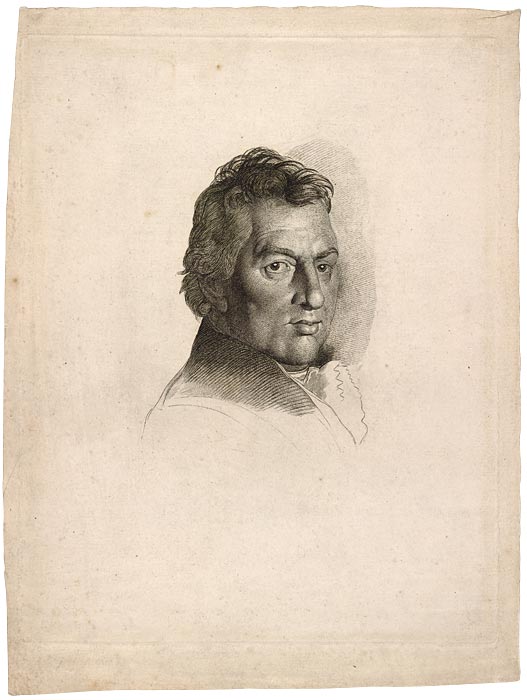
This portrait––one of only two impressions of this second state––depicts Wilson Lowry (1762–1824), a British engraver and illustrator who developed several printing innovations, including the corrosive solution used to etch lines into steel plates. The inscription on the fourth state reads Drawn from Life by J. Linnell, & Engraved by J. Linnell, & W. Blake. By the time that Blake was at work on his Job engravings, he had acquired many of Linnell's engraving techniques, so their styles meshed smoothly. The traces of graphite might indicate Blake's corrections for a subsequent state.
I. Engravings
William Blake was tutored by his mother, given drawing lessons at the age of ten, and at fifteen apprenticed to James Basire, one of the most prominent engravers of the day. Seven years later, when the apprenticeship was complete, Blake was admitted to study at the Royal Academy. Because of this solid instruction, he was admired for his craftsmanship and often identified as "Mr. Blake, the engraver." Throughout his life, he maintained that engraving was a true art form: "Painting is Drawing on Canvas & Engraving is drawing on Copper & Nothing Else." Blake's prints demonstrate his strong commitment to line, developed through Basire and enhanced by his own creativity. Fortunately his engraver's training would support him, though not well, for the remainder of his life. At forty-six, he wrote, "I curse & bless Engraving alternately because it takes so much time & is so untractable, tho capable of such beauty & perfection."
